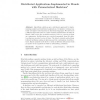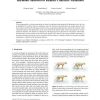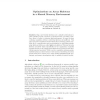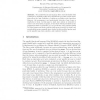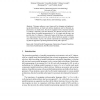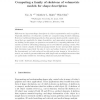103
Voted
VISSYM
2004
15 years 1 months ago
2004
We present a framework for computing generalized distance transforms and skeletons of two-dimensional objects using graphics hardware. Our method is based on the concept of footpr...
FMOODS
2007
15 years 2 months ago
2007
Abstract. Algorithmic skeletons are a well-known approach for implementing parallel and distributed applications. Declarative versions typically use higher-order functions in funct...
100
Voted
SCA
2007
15 years 3 months ago
2007
Current approaches to skeleton generation are based on topological and geometrical information only; this can be insufficient for realistic character animation, since the location...
109
click to vote
INFOCOM
1999
IEEE
15 years 4 months ago
1999
IEEE
The distributed embedded systems industry is poised to leverage emerging real-time operating systems, such as Inferno, Windows CE 2.0, and Palm OS, to support mobile communication...
114
click to vote
IFL
2001
Springer
15 years 5 months ago
2001
Springer
Map- and fold-like skeletons are a suitable abstractions to guide parallel program execution in functional array processing. However, when it comes to achieving high performance, i...
96
Voted
IFL
2001
Springer
15 years 5 months ago
2001
Springer
The parallel-functional language Eden extends Haskell with constructs to explicitly define and communicate processes. These extensions allow the easy definition of skeletons as h...
85
Voted
EUROPAR
2004
Springer
15 years 6 months ago
2004
Springer
Abstract. This paper addresses a new framework for designing and implementing skeleton libraries, in which each skeleton should not only be efficiently implemented as is usually d...
115
Voted
ISVC
2005
Springer
15 years 6 months ago
2005
Springer
The extraction of consistent skeletons in the presence of boundary noise is still a problem for most skeletonization algorithms. Many suppress skeletons associated with boundary pe...
118
Voted
GMP
2006
IEEE
15 years 6 months ago
2006
IEEE
Skeletons are important shape descriptors in object representation and recognition. Typically, skeletons of volumetric models are computed using iterative thinning. However, tradi...

